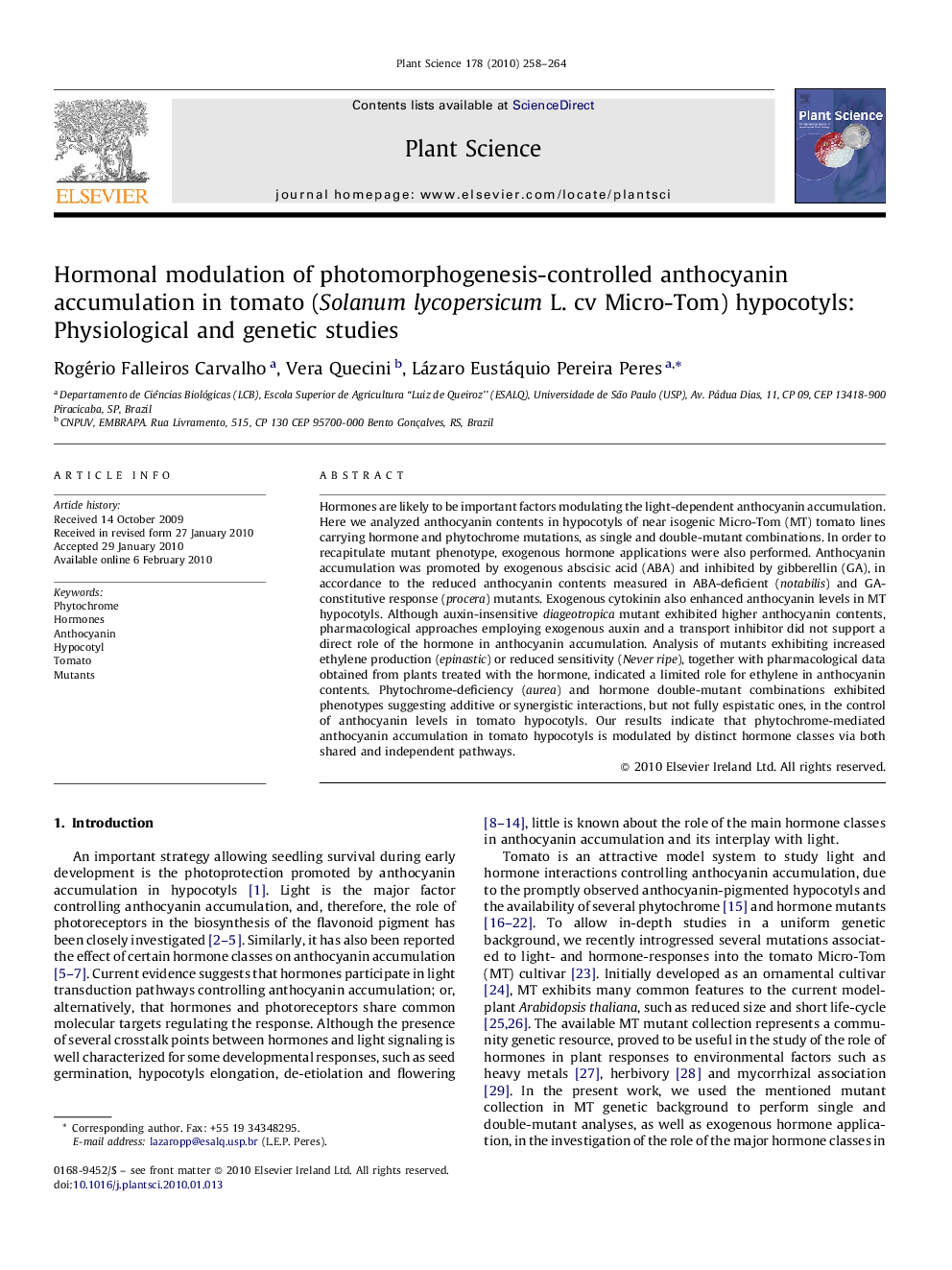| Article ID | Journal | Published Year | Pages | File Type |
|---|---|---|---|---|
| 2017649 | Plant Science | 2010 | 7 Pages |
Hormones are likely to be important factors modulating the light-dependent anthocyanin accumulation. Here we analyzed anthocyanin contents in hypocotyls of near isogenic Micro-Tom (MT) tomato lines carrying hormone and phytochrome mutations, as single and double-mutant combinations. In order to recapitulate mutant phenotype, exogenous hormone applications were also performed. Anthocyanin accumulation was promoted by exogenous abscisic acid (ABA) and inhibited by gibberellin (GA), in accordance to the reduced anthocyanin contents measured in ABA-deficient (notabilis) and GA-constitutive response (procera) mutants. Exogenous cytokinin also enhanced anthocyanin levels in MT hypocotyls. Although auxin-insensitive diageotropica mutant exhibited higher anthocyanin contents, pharmacological approaches employing exogenous auxin and a transport inhibitor did not support a direct role of the hormone in anthocyanin accumulation. Analysis of mutants exhibiting increased ethylene production (epinastic) or reduced sensitivity (Never ripe), together with pharmacological data obtained from plants treated with the hormone, indicated a limited role for ethylene in anthocyanin contents. Phytochrome-deficiency (aurea) and hormone double-mutant combinations exhibited phenotypes suggesting additive or synergistic interactions, but not fully espistatic ones, in the control of anthocyanin levels in tomato hypocotyls. Our results indicate that phytochrome-mediated anthocyanin accumulation in tomato hypocotyls is modulated by distinct hormone classes via both shared and independent pathways.
